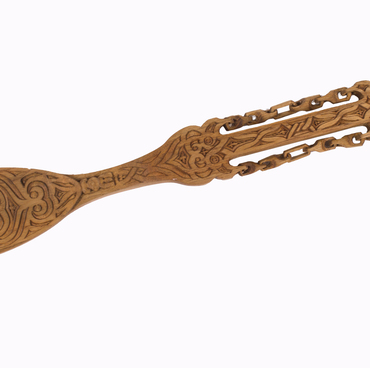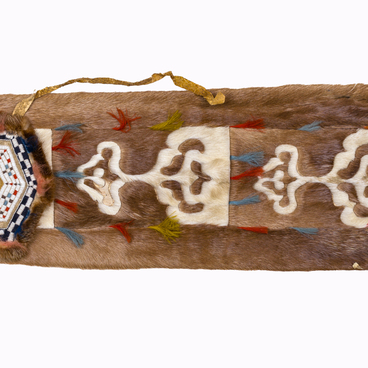A koson is a female pectoral ornament, which was most often used in a wedding set. Such items were made of jade or bone. It was a family jewel, a relic that was inherited from generation to generation in the male line.
It was mostly affordable for wealthy families. The koson was worn by girls around their necks as a protection against evil spirits. This custom persisted until the middle of the 19th century. There are many legends about the magical power and significance of this jewelry.
One of them tells that when the jade koson put on the girl at birth began to strangle her over time, her father, in fear of the anger of the patron saint of his family and extended family, did not allow the jewelry to be broken but decided to cut off his daughter’s head in order to remove the ring without damage. This tragic legend confirms the sacred reverence of the Nanai people for the koson, which served as a talisman, an amulet of protection, and a symbol of the family’s strength.
Nanai brides used a silver chain or ancient glass beads to hang a koson on their chests. It was believed that this protected the girl and her future children from evil spirits. In the past, Amur women reportedly breastfed their children through a hole in such a jade disk. They believed that girls would grow up to be excellent housewives, skillful needlewomen, worthy wives and mothers, and boys would become brave, enduring, successful hunters and fishermen.
Every element of the wedding costume, including jewelry, emphasized procreation as the main criterion of a woman’s social prestige. Sometimes koson was also worn by adult women. This was allowed only on special occasions, such as the bear festival.
The right to wear a
koson was worn for the oldest, most respected female members of the family who
had given birth to and raised a large number of children. The disk from the
exhibition of the Grodekov Museum was discovered in the early 1990s in the
village of Bulava, Ulchsky District, Khabarovsk Krai, during the dismantling of
an old barn. The owner probably hid the unique thing from prying eyes.



